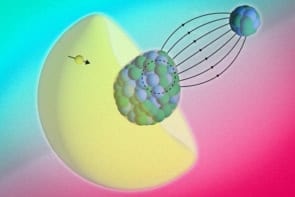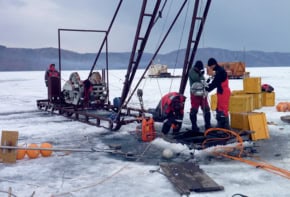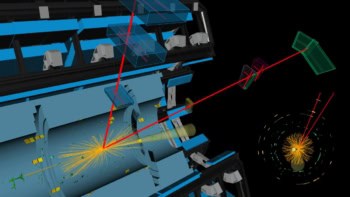Super-fast physical and chemical processes could soon be probed with bursts of electrons that last just femtoseconds. In common with probe techniques that use ultra-short pulses of light, the method demonstrated by Paul Corkum of the National Research Council of Canada and colleagues is based on the ‘recollision’ process, in which electrons stripped from atoms or molecules are slammed back into their parent ions. But Corkum says that his team’s technique is simpler and more efficient than those that use light pulses (H Niikura et al 2002 Nature 417 917).
Many atomic and molecular reactions take place on time-scales measured in femtoseconds – that is, 10-15 seconds – so they cannot be monitored with conventional techniques. To track such fast processes, physicists have developed laser pulses that last less than a femtosecond. These are created by firing a laser pulse into a gas. One cycle of the laser field strips the electrons from their parent atoms or molecules, and the next cycle drives them back towards the ions, which then emit a brief burst of radiation of a shorter wavelength than the original laser pulse.
But in the technique developed by Corkum and co-workers, the electrons ejected by the ions – rather than radiation – are used to probe the ions. The researchers excited a gas of hydrogen molecules with a laser pulse, which also drives the excited electrons back towards their parent ions. Corkum says that when the electrons reach the ion, they are equivalent to an external electron beam with a current density of 1011 A cm-2. Such beams are ideal tools for investigating ions.
When an electron recollides with its parent hydrogen ion, the ion breaks up into its constituent protons. By measuring the kinetic energy of these protons, Corkum’s team calculated that the electrons collided with their parent ions just a few femtoseconds after they were detached by the laser pulse. This means that these electrons can be used to take a snapshot of the parent ion just femtoseconds after ionization.
To demonstrate their technique, the researchers studied a process in hydrogen molecules known as non-sequential double ionization, in which both electrons are ejected from the atom at the same time. This phenomenon has been investigated before, but Corkum’s team used their technique to show for the first time that it depends on the alignment of the molecule. Their experiments also revealed that the process is an order of magnitude more likely to take place in hydrogen than it is in helium.
“The advantage of our technique is that it eliminates two steps,” Corkum told PhysicsWeb. “We use the electrons directly for ultra-fast measurements rather than converting them to photons first, and we produce the electrons right on the material to be studied, so they can hardly miss.”



